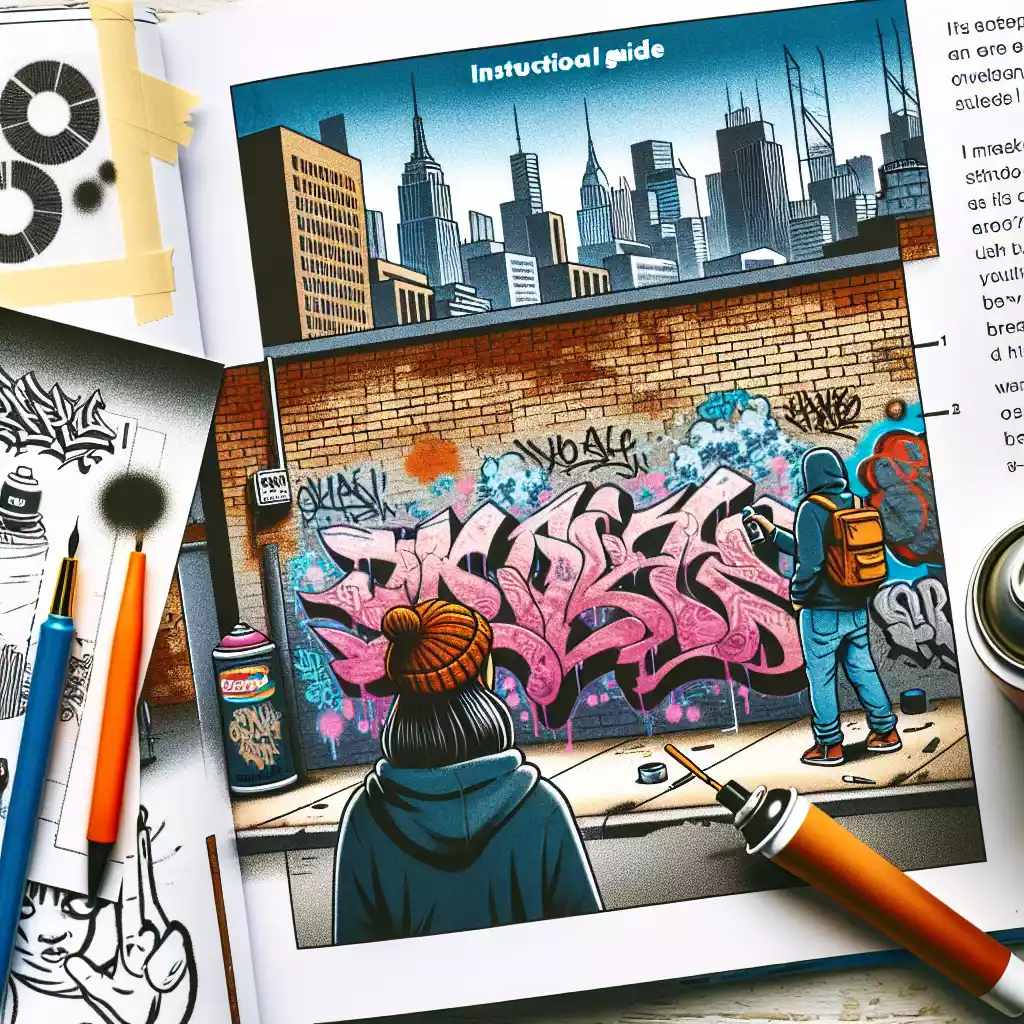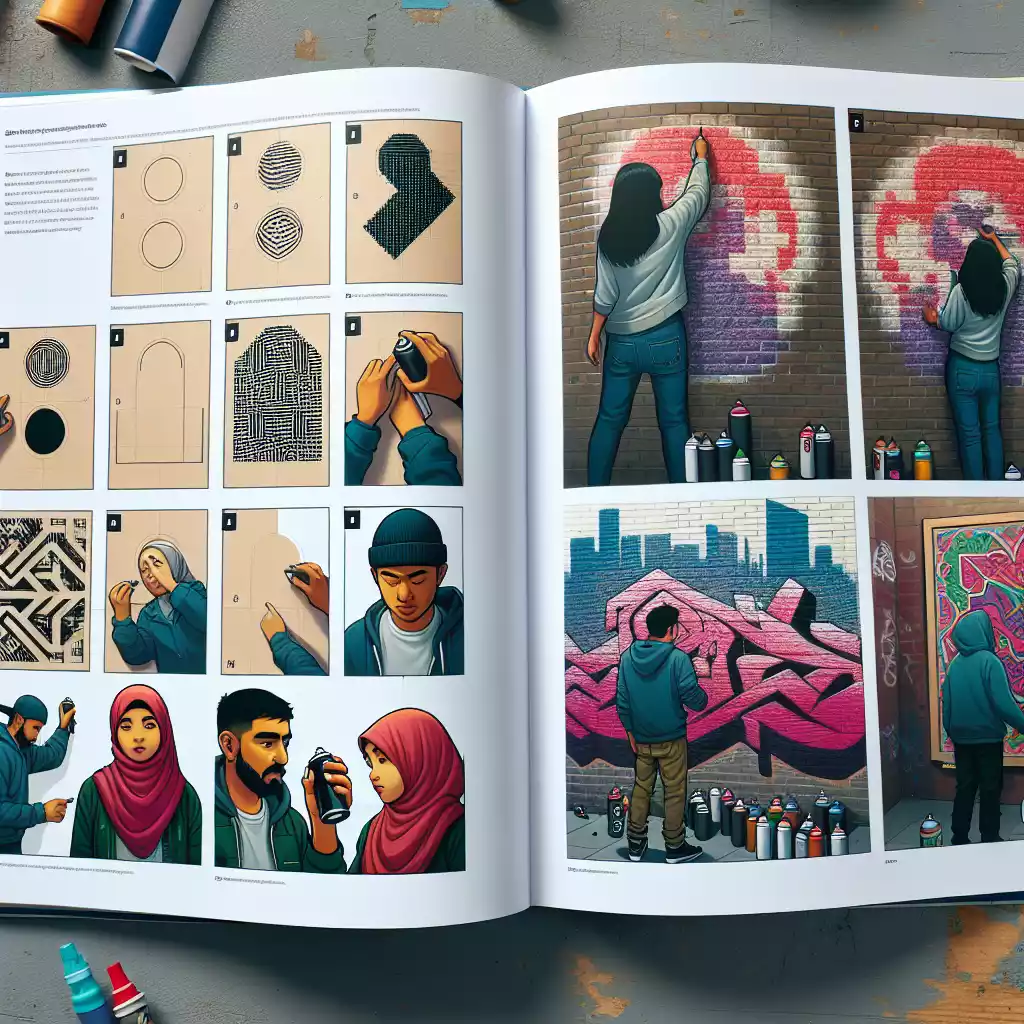Walking through the vibrant streets of Berlin one summer, I stumbled upon a breathtaking mural that left me awestruck. The colors danced off the wall, and the intricate details told a story that spoke to my soul. That moment sparked my love for urban street art and set me on a journey to learn the techniques behind these masterpieces. If you’re a beginner eager to dive into the world of street art, you’re in the right place. Let’s explore the essentials, from basic techniques to advanced methods, so you can create your own stunning urban art.
Understanding Urban Street Art
The Evolution of Street Art
Street art has come a long way from its rebellious roots. Originally seen as an act of defiance, it has evolved into a respected form of artistic expression. Today, street art adorns cityscapes worldwide, transforming mundane walls into vibrant canvases. From the political graffiti of the 1970s to the intricate murals of today, street art reflects the pulse of urban culture.
Key Elements of Urban Street Art
Urban street art is more than just graffiti. It encompasses a range of techniques and styles, including stenciling, freehand painting, stickers, and mixed media. The key elements often include bold colors, striking imagery, and thought-provoking messages. Each piece is a unique blend of creativity and skill, capturing the essence of the artist’s vision.
Getting Started with Street Art
Essential Supplies for Beginners

Starting with the right supplies is crucial for any budding street artist. Here’s a list of must-haves:
– Spray Paint: Choose high-quality, low-pressure cans for better control.
– Markers: Permanent markers for detailing and outlines.
– Stencils: Pre-made or custom-designed for precision work.
– Protective Gear: Gloves and masks to protect from fumes.
– Adhesives: For stickers and paste-ups.
Choosing the Right Location
Finding the perfect spot for your artwork can make a significant difference. Look for legal walls or community art spaces where you can practice without fear of repercussions. Urban areas with high foot traffic can provide great visibility for your work.
Legal Considerations and Permissions

Before you start painting, it’s essential to understand the legal aspects. Always seek permission from property owners or local authorities. Many cities have designated areas for street art where you can create freely. Respecting these rules ensures your art is appreciated rather than removed.
Basic Techniques for Street Art
Stenciling
Creating Your First Stencil
Stenciling is a fantastic technique for beginners. Start by designing a simple image or text on a piece of cardboard or plastic. Cut out the design using a craft knife. Secure the stencil to the wall with tape and spray over it. Lift the stencil carefully to reveal your design.
Advanced Stenciling Techniques
Once you master the basics, try layering multiple stencils to create complex images. Experiment with different colors and textures to add depth to your work. Practice makes perfect, so don’t be afraid to make mistakes and learn from them.
Freehand Graffiti
Mastering Basic Lettering
Graffiti often starts with lettering. Begin by practicing basic block letters on paper. Move on to bubble letters and wildstyle as you gain confidence. Keep your hand steady and use consistent pressure for smooth lines.
Adding Depth and Shadows
To make your letters pop, add shadows and highlights. Use a darker shade for shadows and a lighter one for highlights. This technique gives your work a three-dimensional effect, making it more visually appealing.
Types of Spray Paints
Not all spray paints are created equal. Low-pressure cans offer better control, making them ideal for detailed work. High-pressure cans cover large areas quickly but can be harder to control. Experiment with different brands to find your favorite.
Controlling Spray Can Pressure
Mastering can control is key to creating clean lines and smooth gradients. Hold the can 6-12 inches from the surface and use short bursts for fine details. For broader strokes, move the can steadily across the surface.
Blending Colors
Blending colors can add a professional touch to your work. Start with a base color and gradually add layers of different shades. Use a soft, sweeping motion to blend the edges where the colors meet. Practice on scrap materials to perfect your technique.
Stickers and Paste-Ups
Designing Your Stickers
Stickers are a quick and easy way to get your art out there. Design your stickers using graphic design software or by hand. Print them on adhesive paper or get them professionally made for durability.
Applying Stickers and Paste-Ups
Applying stickers is straightforward but requires precision. Clean the surface to ensure good adhesion. For paste-ups, use a mixture of water and flour as glue. Apply the paste to both the wall and the back of your artwork, then press it firmly into place.
Using Brushes and Rollers
Selecting the Right Brushes
Brushes and rollers are essential for large-scale murals. Use wide brushes for broad strokes and finer brushes for details. Synthetic bristles work well with acrylic paints, while natural bristles are better for oil-based paints.
Techniques for Large Murals
When painting large murals, start with a rough sketch on the wall. Use a roller for the background and large areas. Switch to brushes for details and outlines. Layering your colors and building up the image gradually will yield the best results.
Working with Mixed Media
Combining Paints and Inks
Mixing different media can create unique textures and effects. Combine spray paint with acrylics or inks for a diverse range of finishes. Experiment with different combinations to discover what works best for your style.
Incorporating Found Objects
Adding found objects to your artwork can make it stand out. Use materials like wood, metal, or fabric to add a three-dimensional element. Attach these objects securely to ensure they stay in place.
Developing Your Style
Experimenting with Different Styles
Street art is all about self-expression. Try different styles and techniques to find what resonates with you. Whether it’s abstract, photorealistic, or cartoonish, your style will evolve as you gain experience.
Finding Your Unique Voice
Your unique voice sets you apart from other artists. Let your personality and experiences shine through your work. Don’t be afraid to take risks and push boundaries. Authenticity is key to creating compelling art.
Tips for Success
Planning Your Artwork
Before you start painting, plan your piece thoroughly. Sketch your design and choose your colors. Having a clear plan will save time and reduce mistakes.
Practicing Consistently
Consistency is crucial for improvement. Practice regularly to refine your skills. Set aside time each week to work on your art, whether it’s sketching, painting, or experimenting with new techniques.
Common Mistakes to Avoid
Overworking Your Piece
It’s easy to get carried away and overwork your piece. Know when to stop and step back. Sometimes, less is more, and simplicity can be powerful.
Ignoring the Background
The background is an integral part of your artwork. Don’t neglect it. Use colors and patterns that complement your main design, creating a cohesive and balanced piece.
Advanced Techniques
Creating 3D Effects
Adding 3D effects can take your art to the next level. Use shading and perspective to create the illusion of depth. Experiment with different techniques to achieve a realistic look.
Using Light and Shadow
Light and shadow play a crucial role in creating dimension. Study how light interacts with objects and apply this knowledge to your work. Proper use of light and shadow can make your art more dynamic and engaging.
Collaborating with Other Artists
Benefits of Collaboration
Collaborating with other artists can inspire new ideas and techniques. It’s a great way to learn and grow as an artist. Plus, working together can create more impactful and diverse pieces.
Organizing Joint Projects
Joint projects can be a lot of fun. Plan a mural with friends or join a community art project. Collaboration fosters creativity and builds a sense of community.
Showcasing Your Work
Photographing Your Art
Good photography is essential for showcasing your work. Use natural light and a high-quality camera to capture your art. Take multiple shots from different angles to highlight details.
Sharing on Social Media
Social media is a powerful tool for sharing your art. Create accounts on platforms like Instagram and Facebook. Engage with your audience by posting regularly and interacting with followers.
Maintaining Your Art
Protecting Your Work from the Elements
Street art is exposed to the elements, so protection is crucial. Use weather-resistant paints and sealants to prolong the life of your work. Regular maintenance will keep your art looking fresh.
Repairing Damaged Art
Damage can occur over time. Keep some supplies on hand for quick repairs. Touch up faded areas and fix any peeling or chipping to maintain the integrity of your piece.
Resources for Continuous Learning
Online Tutorials and Courses
There are plenty of online resources to help you improve. Websites like YouTube and Skillshare offer tutorials and courses on various street art techniques. Take advantage of these to expand your skills.
Joining Street Art Communities
Joining a street art community can provide support and inspiration. Look for local groups or online forums where you can share your work and get feedback. Being part of a community can motivate you to keep creating.
FAQs
1. What is the best type of paint for street art?
– High-quality spray paint is ideal for street art due to its versatility and ease of use.
2. How can I find legal walls to paint on?
– Research local laws and look for designated street art areas in your city. Contact property owners for permission.
3. What should I do if my artwork gets vandalized?
– Repair any damage promptly. Use protective coatings to make future repairs easier.
4. How can I improve my spray paint control?
– Practice regularly and experiment with different techniques. Use low-pressure cans for better control.
5. Can I use regular paper for stencils?
– Cardboard or plastic works better for stencils as they are more durable and easier to handle.
—
Street art is a dynamic and expressive form of creativity that anyone can enjoy. By mastering the basics and experimenting with different techniques, you can create stunning pieces that captivate and inspire. Remember to practice consistently, stay true to your unique voice, and enjoy the journey. Happy painting!
Basic Street art technique
Ruth Aquilani is a renowned graffiti artist known for her bold, colorful, and expressive style. She began her career as a street artist in the early 2000s, quickly making a name for herself in the graffiti community with her unique and striking works of art.
